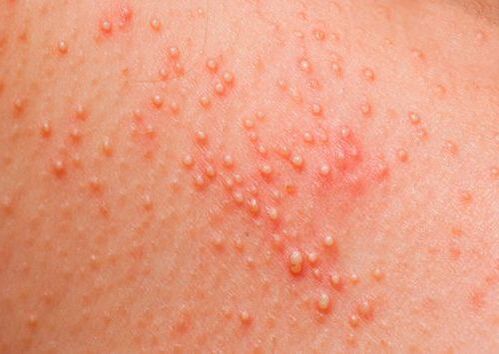Parasites are disease-causing organisms that can inhabit the human, animal and even some plants. There are many kinds of creatures in the world that penetrate the host's body, feed on its useful substances, actively multiply and leave residues in its body, which leads to the development of all kinds of diseases.
Most of the time, worms are found in humans. They are worms of various lengths and sizes, which live mainly in vertebrate intestines. But some helminths can migrate throughout the body, invading muscles, liver, heart, joints, lungs and even the brain.
Worms harm the host's body, so everyone should know how to determine the presence of parasites in the body. But many people don't want to go to the hospital, waste their time, and get tested for helminths for no reason.
In that case, a person can find out if there are parasites in the body by paying attention to a criterion as important as the characteristic symptoms that develop with a particular type of helminthiasis. What if they aren't there? This doesn `t happen!
However, in the early stage of helminth invasion, the vital activity signs of foreign microorganisms are poorly expressed or completely absent. The clinical picture becomes intense and pronounced only when helminths are in active development, as their larvae cannot parasitize in humans.
How to establish the presence of worms in the body without medical research?

Different types of parasites cause characteristic symptoms in the host. If they are timely identified and correctly deciphered, it will be possible to determine the infection at an early stage.
Thus, the probability of incorrect diagnosis is minimized, which will allow a correct and effective deworming with the use of popular or medical antiparasitic agents.
Therefore, to identify parasites in the human body, you need to pay attention to the symptoms:
- Grind your teeth at night.
- Allergic skin rashes - acne, acne, hives, herpes on the lips, eczema, red spots, papillomas, neurodermatitis, psoriasis, etc.
- Development of upper respiratory tract diseases (bronchitis, pneumonia, runny nose), which is characteristic of ascariasis and strongyloidosis.
- Swelling and diarrhea appear because long worms interfere with the excretion of bile and pancreatic juice.
- Constipation occurs when worms form a ball that blocks passage through the intestines.
- Discomfort in joints and muscles due to parasite migration.
- Severe irritability caused by painful symptoms.
- Persistent dry cough that cannot be treated with conventional cough suppressant medications.

An increase in body temperature to subfebrile values is also observed. The causes of this condition can be allergies, blood poisoning, neurological disorders, disturbances in the functioning of Organs internal organs and the brain, and anemic syndrome.
Also, the worm that lives in a person greatly reduces their immunity, which causes the patient to often get cold. In addition, the patient develops a prolonged depression caused by intoxication of the body.
The characteristic symptoms of helminthiasis are nausea and vomiting, also caused by the release of toxic substances. In addition, certain types of worms can live in the human body, producing specific hormones that affect the intestinal microflora, which causes diarrhea.
However, in some cases, these symptoms are not attributed to helminthiasis, as they resemble signs of food poisoning. This can become a serious problem though, because the later the treatment is started, the more damage to the host's organs and systems the parasites have time to inflict.
Thus, to detect helminthiasis at home, a kind of test must be carried out. Therefore, it is necessary to answer the following questions:
- It itches in the anus at night?
- Are the lymph nodes swollen?
- Are there any skin rashes?
- How often does insomnia occur?
- Do you have vomiting and nausea?
- Are there joint and muscle pain?
- How often does flatulence occur?
- How often does the bitter taste appear in the mouth?
If a person gave seven affirmative answers to these questions, then, with high probability, it could be argued that their body is infected with worms.
How to identify the type of helminthiasis by symptoms?

At home, you can determine which helminths inhabited the human body. But this can only be done if the parasitosis has reached the active stage of its development.
Ascariasis and diphylobotriasis are characterized by neurological signs that are more intense in young patients. Aggressive behavior and increased nervousness are due to the effects of toxic substances on the nervous system. For similar reasons, an infected person develops migraines and dizziness.
As a rule, trichinosis is accompanied by joint and muscle pain, in addition to swelling of the face and eyelids. This is due to the peculiarities of Triquinela life, who live in skeletal muscles. You can become infected with this parasite if you eat wild animal or pork meat that has been thermally poorly processed.
Giardiasis affects the functioning of the liver and kidneys and causes all kinds of allergic reactions. Also, some people, when the body is damaged by lamblia, suffer from arthritis, which develops as a result of intoxication. Furthermore, in an invasive patient, immunity is weakened, in the context of that, the following diseases develop:
- sinusitis;
- stomatitis;
- bacterial vaginosis and so on.

A characteristic sign of moth enterobiasis is itching in the anal canal. In addition, most infected people experience disruptions in the functioning of the gastrointestinal tract.
Anemic syndrome is characteristic of schistosomiasis. There are also manifestations of dysbiosis (pathogenic microorganisms inhibit the favorable microflora).
With chloronchiasis, fascionellosis, and opistorchiasis, the gallbladder is affected and jaundice syndrome develops. Furthermore, in the context of the course of these helminthiasis, the liver and spleen enlarge.
Strongyloidiasis manifests itself in a variety of symptoms. Thus, with its progression, there are disorders of the gastrointestinal tract, dyspeptic disorders and allergic manifestations.
How to determine if there are helminth eggs without laboratory conditions? When worms are in the multiplication phase, it is very easy to discover their presence in the body. To do this, you need to do a parasite egg analysis.
With the development of opistorchiasis, you can carry out a home study on your own. For this purpose, adhesive tape or adhesive tape must be placed on the skin of the anal region.
It is best to perform this procedure immediately after waking up in the morning. If a person has opistorchy, their eggs will be identified on the sticky surface of the tape.
Laboratory methods for detecting parasites

If a patient has more than three characteristic symptoms of helminthiasis, he should contact a medical institution so that the determination of the presence of parasites in the home can be confirmed in the laboratory.
The first step in case of suspected invasion of helminths is the study of feces. This allows you to identify worm eggs, round helminths and worms. However, for accurate confirmation of diagnosis, testing should be performed three times every few days.
To determine enterobiasis, a scraping is done near the anus. In addition, one of the most accurate and convenient tests for the patient is the ELISA, which allows the detection of antibodies in the blood that are produced by the body when parasitizing pathogenic microorganisms.
Sometimes, a bioresonance diagnosis is performed, which studies the frequency of the parasites. This method is very informative as it determines the state of the body as a whole. In addition to the parasites, this study allows us to know the state of immunity, which weakens it, to identify other diseases, in addition to pathogenic fungi, bacteria and viruses.
























